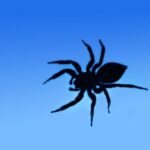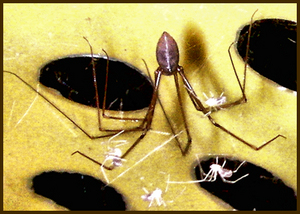Before moving to Tucson, I didn’t think much about bug bites, except for mosquitoes. Now, living in this desert community, I have learned to be cognizant of bug bites because the consistently hot weather creates a hospitable environment for the various insects living in the area. I learned firsthand about identifying insect bites when my husband was bitten by something, and large pustule appeared on his legs. It hurt him so much that it actually impaired his walking ability. Later, we found out it was a spider bite and treated it. Many people do not realize how one simple insect bite could cause so much pain.
Mosquito Bites commonly occur during the summer months. A bite from these bugs lead to illnesses like West Nile Virus and malaria. However, many people get bitten and never catch these life-threatening viruses. Mosquito bites appear as soft, pale bumps on the skin that can turn red because of irritation and/or scratching. The bump may appear immediately or a day or two later.
Symptoms of allergic reactions to this insect bite include a raised bump, and a person’s throat swells, they get hives, and they begin wheezing. Prevention includes wearing insect repellents, not leaving standing water, wearing long sleeve or mosquito-repellent clothing, and avoiding the outdoors during peak mosquito activity.
Symptoms of Bee Stings include sharp, burning pain at the injection site, a red welt on the sting area surrounding a white spot in the function area, and slight swelling. Swelling usually goes away after a few hours. However, the University of Maine’s National AG Safety Database says that people who have allergic reactions to bee stings may experience swelling all over their bodies, wheezing and shortness of breath, loss of consciousness, diarrhea, and anaphylaxis, a life-threatening allergic reaction that requires immediate emergency care.
To reduce the chances of being stung, people should wear light-colored clothing, avoid products containing perfumes, and avoiding flowering plants. To treat bee stings, remove stingers by placing a 4 X 4-inch gauze wipe on the puncture site. Never use tweezers or squeeze the area to remove stinger. This could cause venom to enter the skin and cause muscle injury.
Ticks are so tiny that it may be hard to see when these insects bite a person. Tick insect bites occur when people walk through tall grass, scrubs and wooded areas. The U.S. National Library of Medicine states that ticks cause diseases like ehrlichiosis, Rocky Mountain spotted fever, tularemia, and Lyme disease, a common tick-borne condition.
Tick insect bites produce hard, pus-filled bumps; in rare cases, some grow large enough that they have to be removed surgically. People who have allergic reactions to tick bites develop fevers, headaches, muscle and joint pain, and fatigue and muscle weakness. If these symptoms occur, people should visit doctors to make sure they do not have one of the tick-borne diseases and need antibiotic treatments.
Spider Bites
Approximately 50,000 spider species exist in the world, and most insect bites from spiders are so small that they go undetected. Spiders often get a bad reputation for aggressively attacking or getting into bed and biting people. For the most part, these little creatures like dark corners where they can be left alone. Like most insects, they bite as a defense mechanism when feeling threatened.
When they do bite, the small puncture results in pain, redness, itching, and swelling that last for a couple of days. If a person begins feeling chills, fever, nausea, or abdominal pain, they should call poison control or seek medical attention. While waiting for treatment, people can use a tight bandage to stem the spread of venom or apply a cold or ice-filled compress. Medical treatment includes being able to tell doctors the identity of the spider so that they can prescribe the right kind medications.
Fleas are tiny, wingless creatures that suck the blood of animals and humans. Flea insect bites usually occur in homes of people with pets or on people who work extensively with animals. These insect bites usually appear on the waist, ankles, armpits, elbows, and knees. To identify flea bites, people should look for small, bumpy rashes that may itch and bleed. The itching may be on one rash or occur all over the body.
Symptoms of insect bites, including the appearance of rashes and itching, occur within hours of the bites. The best way to prevent flea bites is to treat indoor pets regularly, even if people need to seek prescription medications. If a flea infestation has occurred, people will have to get their homes treated with insecticides. Since fleas are hard to get rid of, people may have to leave their homes, especially if professional help is needed.
At the weather warms up, numerous insects come out, all of them with the potential to bite someone. Although many people who experience insect bites, most of them will not have an allergic reaction. Simple preventative methods help people avoid being bitten; however, if bites do occur, specific treatments help alleviate pain and itching associated with different insects.




